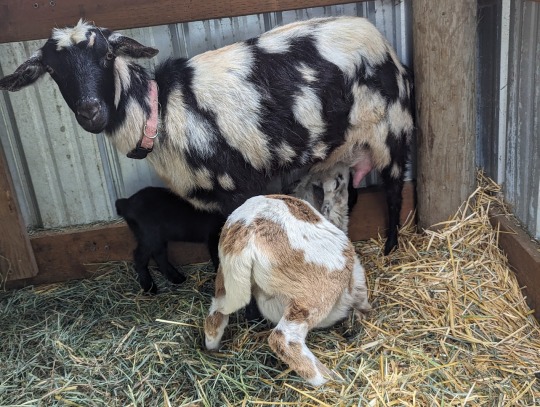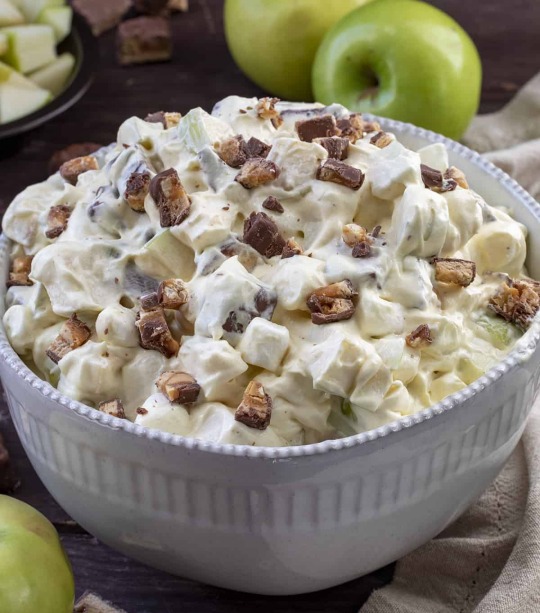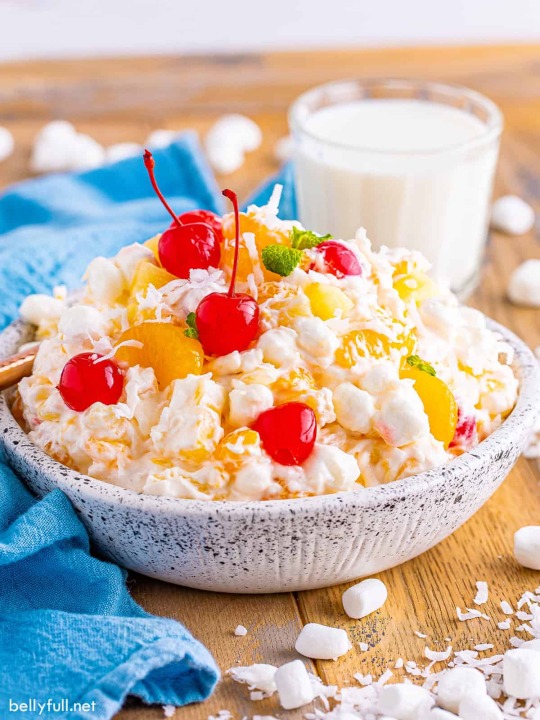#pasteurised
Explore tagged Tumblr posts
Text

who is this silly fella watching over my vaseline
#remember he's pasteurised#giggling and kicking my legs#blur#blur band#graham coxon#coffee and tv#girlblogging#silly fella#fart smella
10 notes
·
View notes
Text

it's been three thousand years
#always pasteurise your milk kids :)#anyway i didn't milk for like a month for various reasons and i have been dying of no cereal to eat as a snack#so excited to have a big ol bowl tonight as my midnight med snack#ag talk
9 notes
·
View notes
Text
Please don't drink raw milk
Pasteurization is simply a process where milk is heated to a high temperature for a length of time to kill the majority of bacteria.
It massively reduces the risk of listeriosis (a type of bacterial infection) and increases shelf life. There are literally no downsides. It's a simple safety measure that's existed for over a century now.
And please please don't feed it to infants and young children, they can and do die from listeriosis. Also don't have raw milk products if you're pregnant as it can cause miscarriage for the same reason. Same goes for anyone with weakened immunity.
#raw food#raw milk#pasteurization#pasturization#pasteurisation#raw diet#tiktok#tiktok is doing a stupid again and if i can stop one person from getting seriously ill then ill be happy
12 notes
·
View notes
Text
Berry Mead - Stabilise, Backsweeten
When we last left off, Berry Mead was a bit weak and thin. I decided to let it sit a bit longer with the black tea and hibiscus.
Day 57 ish (28 Sep)
It's cleared up beautifully!



Sp Gr: 0.990, same as before.
Appearance: Looks like red berry juice, and crystal-clear. You can read through it.
Scent: Orange blossom water, berry. Smells tart. Alcohol. No yeastiness detected.
Taste: Slightly bitter. Faint berry. Gentle alcoholic warmth. Orange blossom. Dry.
In a test cup, I did some experimentation with backsweetening. My first attempts were too sweet, but I was too tipsy to trust myself in continuing, so I decided to postpone the flavour adjustments. In the meantime, I racked to a 4L glass jug in preparation for pasteurisation, and gave myself a bit of time to sober up.


Pasteurisation went similarly to before: I got my big stockpot, mixed boiling hot water from the kettle with hot water from the faucet to get a water bath of about 71C. Added a kitchen towel before placing the glass jug (in order to soften the contact between the jug and stockpot). I threaded a thermometer probe into the jug through the drilled bung, and used a clothespin to prevent it from falling all the way in (we have fruitflies, so I wanted to lower the risk of them getting into my mead). When my probe registered 55C, I set my countdown timer for 25 minutes. If the mead got to 58C, I'd take the jug out to let it cool. I don't think I had any issues with it falling below 55C when it was in the water bath.
After pasteurising, I reapplied the airlock, but with less water, in case of contraction during cooling.
I had a busy week and don't own a bottle corker, so I had to wait to borrow one from a friend. In the meantime, I adjusted the flavour a bit more. Here's the summary of what I added:
150 mL saskatoon berry syrup (locally made)
20 mL Ribena blackcurrant concentrate
1/16 tsp ascorbic acid powder
Calculating the ABV of this is gonna be a huge mess, because I made so many late additions of fermentable sugars. I'm gonna wave my hands and say with all the sugar, the "OG" would've been around 1.085. Fermented to 0.990, this would give an ABV of about 12.5%. With my syrup additions contributing such small amount of volume, let's call the new ABV around 12%, max.
#mead#home brewing#alcohol#home fermentation#tasting notes#berry mead#haphazard mead#extremely haphazard#pasteurisation#pasteurization
2 notes
·
View notes
Text
trying to buy some pasteurised honey and everything that comes up when you search that is either "here's the difference between raw and pasteurised honey" or "here's why we never pasteurise our honey. our raw honey is so much better than any of that pasteurised stuff" and like yes I know raw honey is amazing and I would love to eat it but our body flips its shit if I have any kind of encounter with pollen so if I could just find some of the pasteurised stuff that'd be great thanks.
on a slightly funnier note though I now know where I could theoretically buy a 3.5kg bucket of raw wildflower honey if I wanted to
#personal#thoughts#🍬 post#food mention#I'm pretty sure most of the stuff at the supermarket is pasteurised but sometimes it's raw and not labelled as raw#there's like one jar of raw honey we've been fine with and it was a single source lavender honey bought at a farmer's market#we still have a little bit left and it's heavenly and I also have no idea where I could get more because it was bought for us as a gift#at this rate I might end up just buying the raw stuff and heating it up to pasteurise it myself when I've got the energy#although if I do that I might just end up making candy with it again#at least I have a confectionary thermometer now for if I do decide to do that
3 notes
·
View notes
Text
tried to write “mysterious and poetic” but wrote “mysterious and pasterious” instead so uh that’s how my day is going i guess
2 notes
·
View notes
Text
erling in his flop era whilst drinking raw milk and doing podcasts with logan paul. it all makes sense now.
#I can fix him#idek if this counts as a flop era but it’s a flop era by his standards#still can’t believe he has a prime deal whilst being a wellness influencer#energy drinks? good#pasteurised milk? bad#lmaooo#let me fix him pleaseee#erling haaland
5 notes
·
View notes
Link
Milky Day offers milk pasteurizers for sale. You can pasteurize any kind of milk, or make natural products like cheese and yogurt. Read use & care instructions carefully before using them. To buy a milk pasteurizer online, visit www.milkyday.com
0 notes
Text

y'know what sure that may as well be happening
#SOLVES MY PROBLEM. I GUESS.#goat#kinder goat#phoebe#kids#beetroot#sheep#painted desert sheep#laramie#now to figure out how to pasteurise...half a pint of milk
8 notes
·
View notes
Text
American food scares the shit out of me, it so artificial and processed. Like why do that to food, why eat that??
I know fresh vegetables and fruits are too expensive, but surely there is more stuff "inbetween".






#My poo literally turned black which suggests upper digestion tract bleeding#I am allergic to soya and once went into anaphylaxis over chips#Like what are up adding to potato so I can't eat it???#Why did milk have an ingredients list?#Why do you pasteurise eggs just no#Why add so just stuff
25K notes
·
View notes
Audio
A Complete Guide for Choosing the Right Pasteuriser For Your Business
Choosing the right pasteuriser is a critical decision for any business in the food and beverage industry. A pasteuriser helps to eliminate harmful microorganisms, making the products safer and longer-lasting.
Read more: http://bitly.ws/zZNk
0 notes
Text
Green Tea Mead
Day 31 (10 Sep) - Now that I had a goal, I needed a plan.
I want to add sugar and flavours.
If addding sugar, I need to stabilise the mead (so it doesn't ferment the sugar)
Generally, there are two paths to make the yeast stop fermenting: chemical, or physical. I didn't feel like going out to buy the additives, so I opted for physical.
There's lots of ways to physically kill off microbes, but the easiest for me to control is temperature. If I opt to freeze, I'd have to freeze cold and fast to kill enough yeast, and preferably do a few cycles of freeze/thaw. That's way too hard. Heat it is.
Pasteurisation is (traditionally) the application of heat over time to kill or deactivate "most" of the microbes that cause spoilage in something. Generally, you can pasteurise at a lower temperature for a longer time, or a higher temperature for a shorter time.
Some example combinations:
62C (143F) for 5 minutes
58C (136F) for 22 minutes
Ethanol boils at 78C (173F), so to minimise alcohol loss, I should keep everything below that.
I opted for 58C for 22 minutes.
If you have a sous vide machine, it's really simple to pasteurise.
I don't.
So.

I used my electric kettle to boil water without having to worry about boiling over. Then poured the hot water into my stockpot. I added some hot water from the faucet, and a kitchen towel to soften the contact between the stockpot and my glass jar, then slowly added my glass fermentation jar (airlock removed).
(It's important not to shock the glass with sudden temperature changes, which could make it explode.)
The airlock hole in the jar lid provided the perfect access for a probe thermometer. I used a clothespin to keep the probe from falling in completely. I wanted the probe somewhere in the middle of the jar, not too close to the sides, the bottom, or the top.

I topped the stockpot with more hot water so the level came up near the fill level of the jar. The water bath was about 70 to 80 C, and I could turn on the stove if I needed it hotter. If I needed it cooler, I would use the extremely high-tech method of...removing the jar from the bath and setting it on a cloth on the counter (again to reduce the thermal shock).
I set my probe thermometer's alarm to 61 C to warn me if it was too hot. When the brew came up to 58C, I started my countdown timer.
After 22 minutes, I took the jar out of the water bath, and let it sit on the towel on the counter to cool. I waited about two hours, and the brew came down to about 40C or so. Cool enough to work with, warm enough to dissolve honey easily, and fast enough for my attention span. Great!
I decided to taste and adjust as I go, keeping a tally of incremental additions of various ingredients. Except the honey, which was too much arse to measure each time. I figured the beginning and end volume, and the final Sp Gr would give me a decent indicator how much honey I added (or at least, how much honey proportionately).

For this 1.7-ish L batch, I added about:
Lemon extract, 4 mL
Lemon juice (bottled), 30 mL
Matcha powder, less than 1/8 tsp
Ascorbic acid powder, 1/8 tsp
Honey, approximately 80 - 100 mL
Final Gravity: 1.029
Which puts the ABV around 9.82%
I let the brew sit in the jar for a few days, then siphoned to bottles on day 40 (19 Sep). I got about 1500 mL or so.

Appearance: A bit hazy. Golden-amber coloured. Maybe ever so slightly green?
Scent: Honey and lemon!
Taste: It tastes exactly how it sounds. Honey lemon green tea mead. There's a slight bitterness from the matcha powder that developed since sitting. It's got a nice balance of sweet and tart. The lemon extract really takes it toward "lemon candy flavour", but the lemon juice and ascorbic acid keep it tart and fresh.
I would love to try this cold on a hot summer day (and not a hot day of September, fuck you Manitoba weather).
The mouthfeel is also very nice. Not too light, not too heavy.
It's been a great experimental brew. I'd definitely make a 1 gallon batch of this (minus the pumpkin fuckery). It features shelf-stable ingredients (tea, lemon juice, lemon extract, frozen lemon zest, honey) so it could be made at any time of year. I'm curious how ageing would affect it, but this strikes me as a quick ferment to enjoy right away. And I don't think this bottle will last very long.
#mead#home brewing#alcohol#home fermentation#tasting notes#green tea mead#honey lemon green tea mead#pasteurisation#pasteurization
2 notes
·
View notes
Text
we actually still have like 4 jars of honey in our room but we're allergic enough to 2 of them that we just can't eat them (although I did get half way through one of those before realising that weird feeling was an allergic reaction 😅), one of them is fine but the last time I tried to open it I dislocated my wrist which seems to have fucked it up permanently, and the fourth one is the tiny jar that's raw but we seem to be mostly fine with it and I would like to get some more that I can actually eat before we run out of that one.
we also still have some honey lollipops that I keep forgetting about. whoops
#personal#thoughts#🍬 post#food mention#I keep forgetting about the little jar as well so I haven't actually had any honey in ages but I keep getting cravings for it#I should try opening the jar that fucked up our wrist but that feels like it'd be a challenge#I genuinely am considering just pasteurising a jar myself at this point#I've also just remembered that making honey and fruit jam is an option and sure it'd take a lot of energy but it'd be delicious#I think now I've thought about this too much I'm craving both honey and jam. fuck#anyway hi everyone it's been a while since I've started getting unhinged about honey on main but here we are I guess#I'm making the effort not to be too unhinged about it lol
2 notes
·
View notes
Link
Milky Day offers milk pasteurizers for sale. You can pasteurize any kind of milk, or make natural products like cheese and yogurt. Read use & care instructions carefully before using them. To buy a milk pasteurizer online, visit www.milkyday.com
0 notes
Text
Just gonna say that the caffeine is not the issue. The issue is more the tea itself, which is basically a very weak soup made entirely of Bacteria Food(TM). The tannins, in particular, are very prevalent and are pretty easily digestible by bacteria.
IF YOU ARE WORRIED ABOUT BACTERIA IN TEA THAT YOU ARE GOING TO LEAVE IN THE SUN FOR A DAY:
Use a CLEAN container to make your tea. If you make it in something like a thick-walled pyrex jug, you can straight-up just boil that thing in a big pot which will work amazingly.
BOIL THAT TEA. HARD. YES IT WON'T TASTE THE BEST BUT STILL.
Immediately, and I mean immediately, put clean plastic wrap over it. That will keep it mooostly clean (obviously the plastic wrap itself isn't clean but that's not touching your tea) and will allow the sun in to warm it even more and, ideally, keep the temperature of the tea above 60 celcius all day. Few bacteria can actually survive that.
Obviously don't take this as medical advice but like, if you can keep it hot from the pot and if you never made it with dirty stuff to begin with... well, we disproved spontaneous generation of life literal centuries ago and what I've basically described is how Pasteur did that lol so you should be good.
Brew tea in the sun to infuse a summer drink with the power of the sun 💖☀️ (just be cautious not to use caffinated tea because the caffeine can promote the growth of bacteria in the sun)

84 notes
·
View notes
